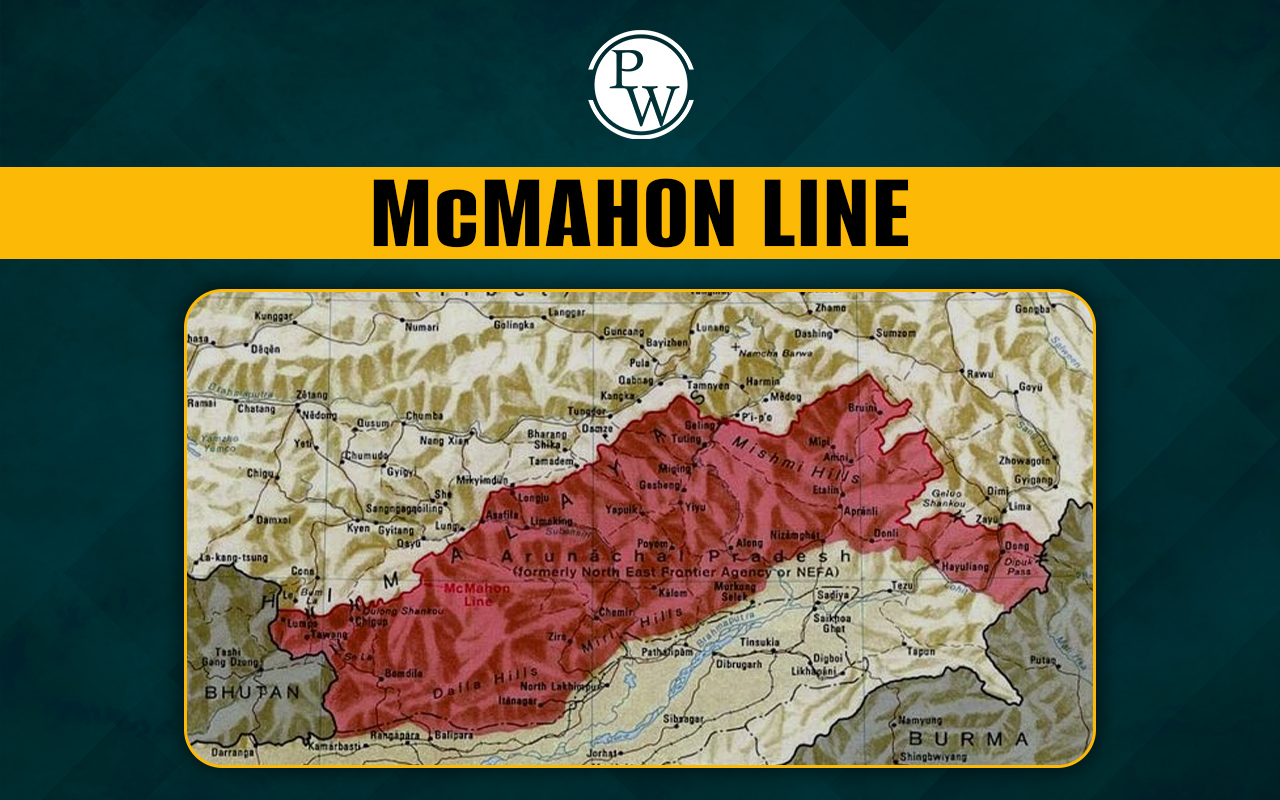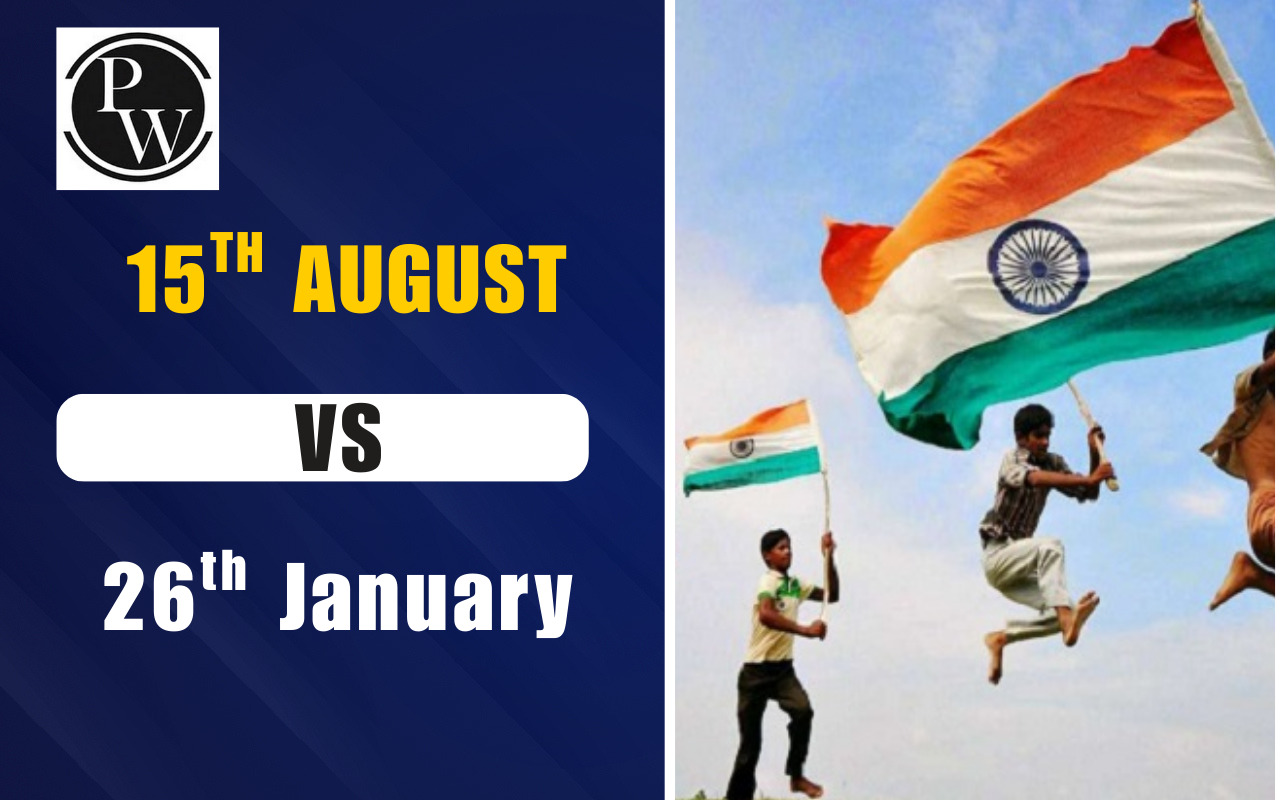
List of Mountain Ranges in India: India comprises some of the world’s most spectacular mountain ranges, which are stretched across the northern, eastern, western, and southern regions. These ranges not only define the physical boundaries of the countries but also shape their climate, culture, and biodiversity. We have created this informative guide which will offer a comprehensive overview of the List of Mountain Ranges in India, detailing their highest peaks, unique features, and geographical distribution from north to south.
List of Mountain Ranges in India
The list of mountain ranges of India spans diverse ecosystems and climates while influencing the nation’s weather patterns, culture, and biodiversity. Each range, from towering peaks in the north to lush hills in the south, holds unique geographical significance.
1. The Himalayas
- Location : North India
- Highest Peak : Mount Everest (8,848.86 meters)
-
Overview
: The Himalayas are India's most famous mountain range,
stretching over 2,400 kilometres
from the
Indus Valley in the west
to the
Brahmaputra River in the east.
This range is home to several of the world's highest peaks, including Mount Everest, although Everest lies along the Nepal-Tibet border. The range has three main parts:
- Greater Himalayas: Also known as the Himadri, the Greater Himalayas are the highest mountain range in the Himalayas, with peaks like Mount Everest and Kanchenjunga. This range has permanently snow-covered peaks and is a significant source of glaciers that feed major rivers in South Asia.
- Lesser Himalayas: Also called the Himachal range, the Lesser Himalayas lie south of the Greater Himalayas and are characterized by moderately high mountains. This region has forested slopes and is known for hill stations like Shimla and Darjeeling, attracting tourists for its scenic beauty.
- Shivalik Hills: The Shivalik Hills, or the Outer Himalayas, form the southernmost range of the Himalayas. These hills are lower in elevation and are composed of soft, sedimentary rock, creating a landscape with rolling foothills and fertile valleys suitable for agriculture.
- Significance : The Himalayas influence India's climate, act as a natural barrier, and are the source of many rivers that support millions of people.
2. The Karakoram Range
- Location : Northern India (Jammu and Kashmir region)
- Highest Peak : K2 (8,611 meters), the second-highest peak in the world
- Overview : The Karakoram range extends into Pakistan and China and is known for its rugged and high-altitude terrain. Glaciers like the Siachen, the longest glacier in the world outside the polar regions, are found here.
- Significance : The Karakoram plays an essential role in national security and has strategic importance due to its location near India’s borders.
3. The Purvanchal Range
- Location : Eastern India (Northeast)
- Highest Peak : Dapha Bum (4,570 meters)
- Overview : The Purvanchal range stretches along India's eastern boundary, running through northeastern states like Assam, Manipur, Nagaland, and Mizoram. This range consists of three main hill ranges: the Patkai, the Naga Hills, and the Mizo Hills.
- Significance : Rich in biodiversity and acts as the ecological hotspot and home to various flora and fauna. The landscape is characterised by deep forests and a humid climate.
4. The Aravalli Range
- Location : Western India (Rajasthan to Haryana)
- Highest Peak : Guru Shikhar (1,722 meters) in Mount Abu, Rajasthan
- Overview : Known as one of the oldest mountain ranges in the world, the Aravalli range extends from Gujarat to Delhi. The hills are low in elevation, and the range is relatively eroded.
- Significance : The Aravallis act as a natural barrier to the stretch of the Thar Desert. It also has significant mineral resources and a rich history with ancient fortifications and historical monuments.
5. The Western Ghats
- Location : Western India (Maharashtra to Kerala)
- Highest Peak : Anamudi (2,695 meters) in Kerala
- Overview : The Western Ghats run parallel to the western coast of India. This range is also a UNESCO World Heritage Site and covers a distance of around 1,600 kilometres. These densely forested mountains play a vital role in maintaining the monsoon weather patterns.
- Significance : The Western Ghats are one of the eight "hottest hotspots" of biological diversity in the world, hosting many species of plants, animals, and microorganisms unique to this range.
- Location : Eastern India (Odisha to Tamil Nadu)
- Highest Peak : Jindhagada Peak (1,690 meters) in Andhra Pradesh
- Overview : The Eastern Ghats are not a continuous range but a series of broken hills. They stretch along the eastern coast and are lower in height than the Western Ghats.
- Significance : These ranges are important for the rivers that flow eastward, such as the Mahanadi, Godavari, and Krishna, providing water to extended agricultural regions.
7. The Vindhya Range
- Location : Central India (Madhya Pradesh)
- Highest Peak : Sad-Bhawna Shikhar (752 meters)
- Overview : The Vindhya range extends across central India and is almost parallel to the Narmada River. It functions as a natural dividing line between North and South India.
- Significance : Historically, the Vindhyas have functioned as a naturally formed cultural and geographical boundary, marking the beginning of southern India.
8. The Satpura Range
- Location : Central India (Maharashtra and Madhya Pradesh)
- Highest Peak : Dhupgarh (1,350 meters) near Pachmarhi in Madhya Pradesh
- Overview : The Satpura range lies south of the Vindhyas, parallel to the Narmada River. It is characterized by rugged terrains and dense forests.
- Significance : The Satpura ranges protect wildlife sanctuaries, such as the Pachmarhi Biosphere Reserve, and contribute to the biodiversity of central India.
9. The Nilgiri Hills
- Location : South India (Tamil Nadu, Kerala, and Karnataka)
- Highest Peak : Doddabetta (2,637 meters)
- Overview : The Nilgiris are part of the larger Western Ghats, which are famous for their rolling hills and tea plantations. They are located at the junction of Tamil Nadu, Kerala, and Karnataka.
- Significance : The Nilgiris are a popular tourist destination and contribute significantly to India’s tea production.
Mountain Ranges in North India (North to South)
The List of Mountain Ranges in India begins with the majestic ranges of North India, such as the Himalayas and the Karakoram. These sky-touching mountains stretch from Jammu and Kashmir to Arunachal Pradesh , which forms a natural barrier to the cold winds from Central Asia and influences the climate across the region. This region is also comprised of some of the notable highest peaks in the world, such as:
| Mountain Ranges in North India | |
| Mountain Ranges | States |
| Saltoro Mountains | Ladakh |
| Karakoram | Ladakh |
| Deosai Mountain | J&K |
| Ladakh Range | J&K |
| Zanskar Range | J&K |
| Pir Panjal Range | J&K |
| Zabarwan Range | J&K |
| Dhauladhar Range | J&K |
| Kishtwar Himalaya | J&K |
| Garhwal Himalaya | Uttarakhand |
| Dundwa Range | Northern UP |
Mountain Ranges in Central India (West to East)
In Central India, the Aravalli, Vindhya, and Satpura ranges span from west to east. The Aravalli range is one of the oldest mountain ranges in India and protects the fertile plains from the encroaching Thar Desert. The Vindhya and Satpura ranges mark the geographical divide between northern and southern India and are rich in mineral resources and wildlife.
| Mountain Ranges in Central India | |
| Mountain Ranges | States |
| Girnar Range |
|
| Aravalli Range |
|
| Malwa Plateau |
|
| Rajpipla Hills |
|
| Gawilgarh Hills |
|
| Mahadeo Hills |
|
| Bhanrer Range |
|
| Bhander Plateau |
|
| Maikal Hills |
|
| Kaimur Range |
|
| Baghelkhand Plateau |
|
| Sonpar Hills |
|
| Vindhya Range |
|
| Satpura Range |
|
Chota Nagpur Plateau (North to South)
The Chota Nagpur Plateau is not a mountain range but a significant geological formation in eastern India. It covers parts of Jharkhand, Odisha, and Chhattisgarh and is rich in coal and minerals. These undulating hills and dense forests contribute to its importance within the List of Mountain Ranges in India for its role in India’s mineral economy.
| Chota Nagpur Plateau | |
| Mountain Ranges | States |
| Rajmahal Hills |
|
| Hazaribagh Plateau |
|
| Mailan Hills |
|
| Ranchi Plateau |
|
| Hazaribagh Hills |
|
| Ramgarh Hills |
|
| Garhjat Hills |
|
Mountain Ranges in North East India
The Purvanchal range in Northeast India includes the Patkai, Naga, and Mizo Hills. This range is an extension of the Himalayas and runs parallel to the eastern border, adding unique ecological diversity to the List of Mountain Ranges in India. The region is known for its rich flora and fauna, dense forests, and indigenous cultures.
| Mountain Ranges in North East India | |
| Mountain Ranges | States |
| Dafla Hills |
|
| Miri Hills |
|
| Abor Hills |
|
| Mishmi Hills |
|
| Kangchenjunga |
|
| Garo Hills |
|
| Khasi Hills |
|
| Jaintis Hills |
|
| Mikir Hills |
|
| Rengma Hills |
|
| Patkai Bum |
|
| Naga Hills |
|
| Langpangkong Range |
|
| Barail Range |
|
| Laimatol Range |
|
| Bhuban Hills |
|
| Atharamura Range |
|
| Lushai Hills or Mizo Hills |
|
Western Ghats Mountains (North to South)
Extended from Maharashtra to Kerala, the Western Ghats run parallel to India’s western coastline. This UNESCO World Heritage Site is renowned for its biodiversity and is a crucial part of India's List of Mountain Ranges. The range influences the southwest monsoon and is home to many endemic species of plants and animals.
| Western Ghats Mountains | |
| Mountain Ranges | States |
| Satmala Hills |
|
| Ajanta Hills |
|
| Harishchandra Range |
|
| Balaghat Range |
|
| Kudremukh |
|
| Baba Budan Hills |
|
| Nilgiri Mountains |
|
| Akamala Machad Hills |
|
| Anaimalai Hills |
|
| Palani Hills |
|
| Cardamom Hills |
|
| Varushnad Hills |
|
Eastern Ghats Mountains (North to South)
The Eastern Ghats extend along the eastern coast, from Odisha to Tamil Nadu. Unlike the Western Ghats, the Eastern Ghats are not a continuous range but a series of broken hills and mountains. This range is essential in the List of Mountain Ranges in India as it impacts the flow of eastward rivers like the Godavari, Krishna, and Mahanadi, which sustain agriculture in the region.
| Eastern Ghats Mountains | |
| Mountain Ranges | States |
| Nayagarh Hills |
|
| Bastar Plateau |
|
| Nallamala Hills |
|
| Erramala Hills |
|
| Velikonda Range |
|
| Palkonda Range |
|
| Seshachalam Hills |
|
| Nagari Hills |
|
| Javedi Hills |
|
| Melagiri Range |
|
| Shevaroy Hills |
|
| Pachaimalai Hills |
|
| Sirumalai Hills |
|
Conclusion
India’s diverse landscape is shaped by these extraordinary mountain ranges, each with its distinct geographical, ecological, and cultural significance. The List of Mountain Ranges in India reflects the extensive natural wealth and biodiversity that makes India unique. From historical significance to environmental impact, each range contributes to India’s identity, offering both natural resources and natural beauty across the subcontinent.
Looking for guidance in UPSC preparation? Enroll in the best courses offered by Physics Wallah!
| UPSC Related Articles | ||
| UPSC Prelims Questions | NCERT for UPSC Exam 2025 | UPSC Mains Admit Card |
| UPSC Mains Exam Pattern | UPSC Scholarship Test | UPSC Result |
List of Mountain Ranges in India FAQs
Q1. What are the 7 mountain ranges in India?
Q2. What are the ten important mountain ranges of India?
Q.3 How many mountains are there in India with names?
Q.4 What is the highest mountain in South India?
Q5. Which mountain range acts as a barrier to the Thar Desert?
Q.6 Which mountain ranges are in Eastern India?












